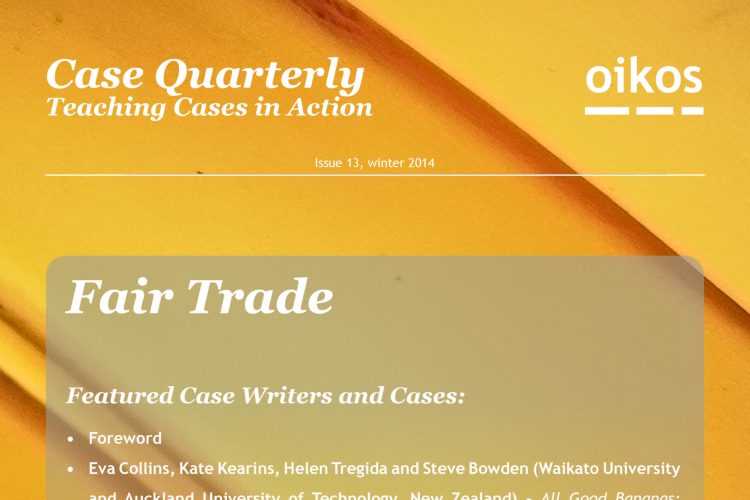Abstract: After winning important battles against soda, governments and health activists are targeting chocolate bars because of their high sugar content, and some, like the UK government in 2017,...
Abstract In 2011 three young entrepreneurs, Jakob Assmann, Florian Henle and Simon Stadler, set out to revolutionize the energy market by offering a radical solution for customers to...
Abstract The Alibaba Group was one of the biggest and fastest growing businesses in China for about ten years. Among many other companies under the holding’s umbrella, Alibaba.com...
As of today, fairtrade products can be found in almost any grocery store. Both, sales volume and variety of products available keep increasing at a fast pace. Much has...
Case Abstract Brett Beach and Tim McCollum, co-founders of Madécasse, spent two years as Peace Corps volunteers in Madagascar. During that time, they fell in love with the...
Case Abstract This is the story about the efforts of a social entrepreneur, Assheton Carter, to create a meaningful initiative with Wal-Mart in ethical mining. His idea: to...
Case Abstract This case is about the sustainable development initiatives of one of the world’s leading food and beverage companies, PepsiCo. Faced with various criticisms on the social...
Case Abstract The Clorox Company launched green household cleaning products line GreenWorks in 2008 and immediately commanded 40% of the market. Following stagnant sales in the early 2000’s...
Case Abstract This case describes the issues and dilemmas facing a company in their efforts to differentiate their product through a social sustainability programme. Over the years, the...
Lululemon’s commitment to the environment: A tangle of seaweed, suppliers, and social responsibility
Case Abstract This case introduces Lululemon, an athletic and yoga wear retailer, and their commitment to the environment. The company was founded on its Corporate Social Responsibility (CSR)...
- 1
- 2


